The Poison Apple: Mr. Sci-Fi: An Interview with Marc Zicree and the Future with Space Command
Crowens: I wanted to interview someone whose focus was not only the entertainment industry but also science fiction. Previously, almost everyone I’ve interviewed has been involved in fantasy or horror. After following you on Facebook I really wanted to interview you. Right away, I’ve been able to pick up on your “contagious enthusiasm” and high energy.
Zicree: Glad I could do it.
What was your very first job in the entertainment industry, and how did you get your foot in the door?
I grew up reading in the genre watching the original versions of Star Trek, The Twilight Zone and The Outer Limits, and I started going to science fiction conventions when I was a teenager growing up here in LA. My heroes were the writers. There was a lot of crossover from the stories I read and the writers from those three shows: Richard Mathieson, Theodore Sturgeon, Ray Bradbury, George Clayton Johnson, Harlan Ellison… they were all doing books and TV shows. When I was ten, I heard Ray Bradbury speak at a local library — a huge influence, and I became a big fan. When I was around fifteen or sixteen-years-old I started going to conventions and meeting them, and from there they became mentors.
There was also a radio show on KPFK in Los Angeles called Hour 25, and they interviewed all the great science fiction writers. Around 1973 when I was eighteen, I wrote a half hour radio play that was a satire of science fiction conventions, TV shows and movies called Lobotomy. So, I wrote, directed and acted in it with three of my friends and it aired on KPFK. On that same show, I heard Harlan Ellison talking about the Clarion Writer’s Workshop. When I was nineteen and an art student at UCLA, I attended Clarion that summer. It was at Michigan State University. The students included people like Kim Stanley Robinson and Robert Crais, who became well-known science fiction and mystery novelists, respectively. Our teachers were Gene Wolfe, Roger Zelazny, Samuel R. Delaney, Kate Wilhelm, Damon Knight and Joe Haldeman – all very famous and accomplished science fiction writers. It was a great lineup.
Nichelle Nichols (left), Marc Zicree (middle), Doug Jones (right)
Damon was editing an anthology at that point (Clarion SF), and he bought “Leader of the Club,” a story that I had actually written when I was eighteen in my first English class at UCLA. It was a satire where Disney takes over the world, which literally becomes Disneyworld. It was my first sale, and Damon paid me fifty bucks. After that, I returned to UCLA and finished my degree in painting, sculpture and graphic arts. But growing up I knew I was going to be either an artist or a writer, and although I’d started in visual arts, thanks to Clarion I knew someone would actually pay for my writing. That made all the difference. So by the time I graduated from UCLA, I knew I was going to be a writer — and particularly a writer-producer in television.
Clarion SF (Berkley Medallion, 1977), containing
“Leader of the Club.” Cover by Richard Powers
The great science fiction writer Theodore Sturgeon taught an adult education class at UCLA while I was a student there. As an undergrad, I was forbidden from taking that class. But I said, “Jesus Christ! This is Ted Sturgeon. I’m not going to miss that opportunity.” So I took that class. The teaching assistant was a young man named Michael Reaves. He had attended an earlier year of Clarion than I and was already selling short stories, novels and animation scripts for television. We became friends when he was writing a series for NBC called Space Stars, which starred Space Ghost. He asked if I’d like to collaborate on a script for that show, which I did.
On the set
Then Smurfs was just starting up, and I collaborated on a Smurfs script with Michael, and it became very clear that I had the ability to write scripts on my own. I sort of became the God of Animation and rose very quickly, writing for all the animation companies and networks on such shows as Superfriends, Real Ghostbusters, He-Man, The Incredible Hulk, Blackstar, The Littles, Pole Position and many more. That broke me into TV, but my real goal was to write for live action shows, not animation. So I wrote a spec live action screenplay entitled Piece of Cake. That sold, and as a writing sample it got me a pilot deal with NBC for Choose Your Own Adventure, on which I was both a writer and associate producer. It got shot in Thailand with Pat Morita, Soleil Moon Frye, Charlie Haid and Chad Allen. It was a wonderful experience, but it didn’t get picked up as a series. Then I was hired to develop Captain Power and the Soldiers of the Future, a live action science fiction show, and that led to Star Trek: The Next Generation, Deep Space Nine, Babylon 5, Sliders, Friday the 13th: The Series, and on and on. So I was off and running in television.
You were in your early twenties?
Yes. There were no college classes at the time on how to write and produce a TV series, so I essentially had to create my own “grad school.” I figured if I wrote a book on one of my favorite shows I’d learn how to write and produce for television. It was just two years after Rod Serling’s death when I started work on The Twilight Zone Companion. At first, I approached people who had worked on the show. Then I went to Rod’s widow Carol, who gave me full access to everything, since those I had interviewed previously were willing to vouch for me. The Twilight Zone Companion became an instant bestseller and has been in print ever since.
Guillermo del Toro and Marc Zicree
At this point I was known for two things: the science fiction shows I was writing for and as the world’s expert on The Twilight Zone. I was the producer on every home video version of The Twilight Zone. For the Blu-ray set I did the 52 audio commentaries, and there are still 104 to go. Someday I’ll do those, but my heroes were Rod Serling, Ray Bradbury, Harlan Ellison — they were doing books, TV shows and movies, so I sort of set my cap for that and have been doing all three my entire career. TV is my favorite medium. I love television.
It’s funny. A lot of people say, “I just want to be a writer.” Yet, you were already saying you wanted to be a writer-producer. Any particular reason? Did you want the control?
My goal was not just to write scripts but to get my material to the audience, and so I had to have control over the material. I never was a staff writer. I started as a story editor and had a mind for story. Even when I was a story editor I would say to my bosses, “I’m happy to do as many rewrites as it takes, but I’m not happy to be rewritten by others.” For the most part that was honored, because I was a very skilled writer and they appreciated my talents. Then I moved up from story editor to producer and ultimately to executive producer, because the power in television is the writer/executive producer — also known as the showrunner. At the same time, I was becoming friends with a number of showrunners and learning from them, and I still pursue that even now. Ray Bradbury was a mentor. Guillermo del Toro was a mentor. I’m still learning and growing.
Space Command table set up at a convention
Is there a difference between writing for animation and live action?
Now there’s less difference between the two types of scripts than there was back then. In the past you had to break down a script into shots like Close Up Brainy Smurf, Two-Shot Brainy Smurf and Papa Smurf, and so on.
More along the lines of storyboards?
Yes exactly, and my artistic background was helpful visualizing all that. So you break down every shot. A half-hour script in animation would be fifty-five pages, whereas a half-hour live action script might be thirty. That was the main difference. But now, it’s much more similar. Once I left animation that was pretty much it. Unlike some of my friends who loved animation and had grown up with Looney Tunes and loved Tex Avery, Friz Freleng, Chuck Jones and all those guys, my goal wasn’t to be an animation writer. That was just my way into television.
That said, I always was the kind of guy who would swing for the fences and try to do my best work no matter what. So I’d work just as hard on a script for Smurfs or The Real Ghostbusters as I would for Star Trek — The Next Generation. I never lowered myself to the level of any given show –I’d bring my best work all the time. That’s really gratifying, because a lot of the work I’ve done I’m really proud of.
Most of the time when you were hired, were you working for the producers of the show or the network?
If you were a freelancer, you dealt with the producers of the show, who were usually writers. They would be getting network notes that they’d pass on to you. When you’re on staff you’re working for the showrunner, but you’re often in direct conversation with the network executives in terms of notes. Now that I’m creating shows, I’m working directly with the network executives to sell the show. You’re looking for the executives who’ll be enthusiastic about your work and not be damaging to the material. That’s always the goal.
You’ve been working on Space Command for how long?
We started shooting in 2014 and have continued to shoot more of the show until now. We’re planning on shooting even more over the next few weeks and months.
This is all part of the two-hour pilot?
No, that’s already in the can. We’re now doing post-production and visual FX on the pilot and have also shot forty minutes of the second two-hour story and the opening sequence of the third. I’ve also written the first eight hours of the twelve-hour first season. We’re an ongoing production even though we haven’t sold the show yet and don’t know who the buyer will be.
Did you say you had a permanent set over in Pico Rivera, California?
We did. We had a studio with standing sets for about several years. When we finished the forty minutes of the second episode, we closed it down and put the sets in storage to move our funds over to post-production, because I didn’t want that overhead while we weren’t shooting. We’ll start building the interior of an alien hibernation spaceship shortly for the rest of the second two-hour story, and we’ll need a space to build it in.
How long does it usually take to build a set like that?
A few months, but that depends on a lot of factors including the scale of the sets. For instance, when we were shooting the pilot we had a cave set, the bridge and corridors of the Paladin and Templar – two Space Command ships – and also a mining facility in the asteroid belt. Then you mix and match and build things out. It’s pretty elaborate.
And you’ve got it pretty well set that you know when to recycle the sets?
Yeah, it’s like having a big Erector or Lego set and you move the pieces around. You repurpose them. Someone I knew was getting rid of their sets and asked me if I wanted to buy a cave set. So I asked my brother Jim, who was my shop foreman and set designer, if we could use a cave set, and he said, “Yes!” So we bought that, and that cave set has been used as a mining operation in the asteroid belt, it’s been New Kyoto on Mars, it’s been the Iron City in an ice crater on Mercury. So we’ve utilized it a lot.
How would you describe the premise behind Space Command?
Some of the cast and crew at San Diego Comicon
I was noticing that most of the science fiction in film and TV in the past few years was very dark and dystopic such as The Expanse and the new Battlestar Galactica. This was before Star Trek Discovery and The Orville debuted. I wanted something that was inspiring, with a hopeful vision of the future like the original Star Trek had been. The original Star Trek aired during the Vietnam War, during the riots in major cities, the Civil Rights movement and the threat of nuclear war. I wanted to convey the message that we could cross barriers and boundaries and create a future worth living in.
Basically, Space Command starts sixty years from now and covers 150 years in the lives of four families — five generations as we colonize the solar system and jump to the stars. The basic notion is that compassion and empathy and love can counter all the chaos and fear and divisiveness, and we have to take that into the real world. We have to believe that we can make a world worth living in for ourselves and our children. That takes action. That takes reaching out to others who on the surface might not seem like us, but they have the same heart and desires as we do. I’m very proud of what we’ve created.
That sounds great. Now are you the primary writer on Space Command?
Yes, I am, and my wife, Elaine is co-writing, directing and producing with me. Usually, I’ll instigate the first few drafts and then she’ll tweak them. I’ve had a couple of friends as co-writers at various points, but I’m the primary writer. I’ve also written a lot of my friends who are actors into the mix, which is great fun.
Do you have a full-time personal assistant? You seem like you do so much.
They’re not full-time, but I’ve got three assistants right now plus teams of specialists such as the VFX team, editors, a composer…
Marc Zicree and George Takei
To do your social media?
I find I do my own social media, but I’m expanding that team, too. I’m trying to learn to delegate more, because I can’t do it all.
Because you travel, too.
In 2018 I went to Worldcon in San Jose, San Diego Comic-Con, the Las Vegas Star Trek Convention, New York Comic-Con and the Northeast Star Trek Convention. Normally, I don’t do that many conventions back to back, but fan outreach is also important. I have a new book coming out called Greenlighting Yourself, which is basically teaching one how to do everything I’ve been doing with my projects. There’s a new model emerging where creators can essentially form a partnership with their audience and can bypass the studios and networks and even the publishing companies.
Do you consider yourself a pioneer in that area, or are other people also doing it?
I’m very much blazing a trail. It’s very rare for someone who comes from the studio and network world as I do to be doing this. A lot of my friends are showrunners on major shows, but they’re frustrated by network interference. So for 2019 I’m creating a project I call the Showrunners Network, where I’m collaborating with other showrunners to create six series and roll them out as a slate. Our audience will finance production of the six pilots simultaneously. That’s the next crazy big thing. So far, I’ve come up with 400 ideas to share with my collaborators. I’m trying to come up with ten ideas per day. I haven’t hit that stride yet, but that’s the goal.
Are you getting your crowdfunding mostly from fans or from industry insiders or is it a combination?
Primarily from fans and my audience. Over 5,000 people around the world have contributed over a million dollars. We just finished a crowdfunding campaign for VFX and post. For that, we raised $160,000 between two different efforts within one month. Also, I don’t draw a salary on Space Command. All funds raised go to the project. Authenticity and communication with your audience is what works, because they know and like my work, and the actors I’ve cast trust me.
And what a cast! Doug Jones from Star Trek Discovery, Mira Furlan, Bill Mumy and Bruce Boxleitner from Babylon 5, Robert Picardo from Star Trek Voyager, Stargate Atlantis and The Orville, and Mike Harney from Orange is the New Black, A Star is Born and Project Blue Book.
When Marc worked as a writer on Deep Space Nine
I also like casting new actors. We did worldwide auditions for two of our leads and got 7,000 inquiries and 1,200 videos for two major roles we posted. We ended up casting nine actors from that search. If the world was financing this project, why not let the world be part of our casting process? This reminded me of a similar search when they were casting for Scarlet O’Hara for Gone With the Wind in 1939. We ended up casting Ethan McDowell as Captain Jack Kemmer and Bryan McClure as Lieutenant Bradbury.
I noticed you had a Lieutenant Bradbury and a Joe Haldeman character.
All of the Space Command personnel are named after science fiction luminaries. Kemmer is named after Ed Kemmer who starred in Space Patrol in the 1950s. I actually met him. It was done live — great spirit — great camaraderie — just a wonderful show. I met him when he was older. This is my way of honoring him. On the Paladin, our hero ship, we’ve got someone named after Fritz Leiber, Ursula K. Le Guin, Theodore Sturgeon, Clifford Simak… there’s a British writer, Charles Chilton who did a radio show I love called Journey into Space, so I have a Chilton… Leigh Brackett is another one and Joe Haldeman, because Joe was one of my teachers at Clarion. Bruce Boxleitner plays that role, General Joe Haldeman. It turns out Joe and Bruce are fans of each other’s work, so they both found it quite a kick that I named the character that.
You’ve worked with so many respected people in the industry, such as George R.R. Martin, Ray Bradbury and Guillermo del Toro. Who would you say has been your favorite co-conspirator?
(Laughs!) Personally, it would be my wife, Elaine. I love working with her. She’s a wonderful director, and her notes on my scripts are just spectacular. There were two projects I would’ve loved to have moved forward but sadly wasn’t able to. I’m a huge fan of the The Martian Chronicles and learned there were twenty-two Mars stories Ray Bradbury had written that fit into that chronology but were not in The Martian Chronicles. So I asked Ray if I could take these stories and shape them into an eight-hour miniseries called Ray Bradbury’s Lost Mars. Then I spoke with my friend Michael Nankin, who had been a great director on Battlestar Galactica, and asked him if he wanted to come aboard this project. The idea would be that Michael and I would produce it. I would write it, and Michael would direct it, and I outlined the entire eight hours. But sadly, we couldn’t sell it. Then the rights reverted back to Ray. He gave me a free option on it, and it was a shame it never got made.
Another project I worked on was with Ray Harryhausen, one of the greatest stop motion animators, an Oscar winner. He had all sorts of unmade projects, including a sequel to Jason and the Argonauts that I outlined called Jason in the Underworld, but that also never got made.
Some of the cast and crew behind Space Command
This was a big part of what decided me to just go directly to my audience. If crowdfunding had existed then, I could’ve financed both of those projects — no problem. When the networks and studios were so foolish as not to greenlight those incredibly wonderful projects, I did Star Trek New Voyages “World Enough and Time” with George Takei. That was the great Sulu story that was done without a studio or network. I co-wrote it with Michael Reaves (Batman – The Animated Series, Star Trek – The Next Generation) and also directed and executive produced it. It was nominated for both a Hugo and a Nebula Award and won the TV Guide Award. You can watch it on my Mr. Sci-Fi YouTube Channel.
You can also watch the first hour of the Space Command pilot here.
More can be found on Marc Zicree at his website, on Space Command here, and on IMDB (the Internet Movie Data Base). A list of his books can be found on Amazon.
Elizabeth Crowens is a regular contributor to Black Gate, and the award-winning author of Silent Meridian, which will be re-released in 2019 and A Pocketful of Lodestones (August 2019), books one and two of the Time Traveler Professor series. She also writes Hollywood suspense. www.elizabethcrowens.com
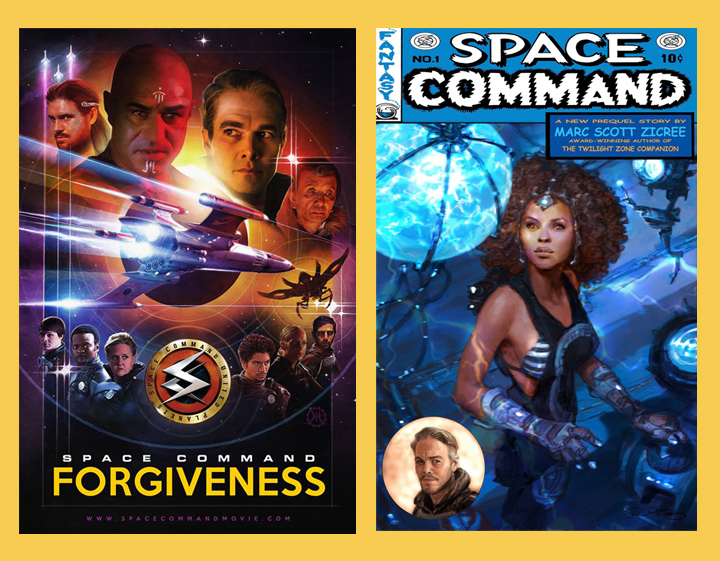
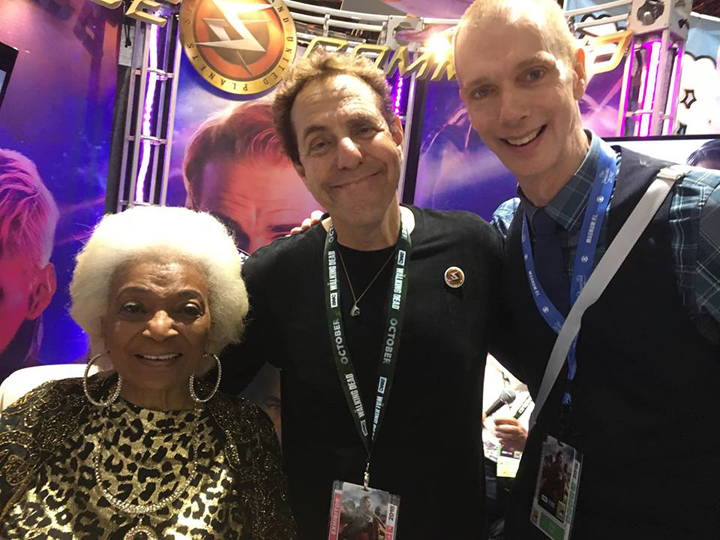
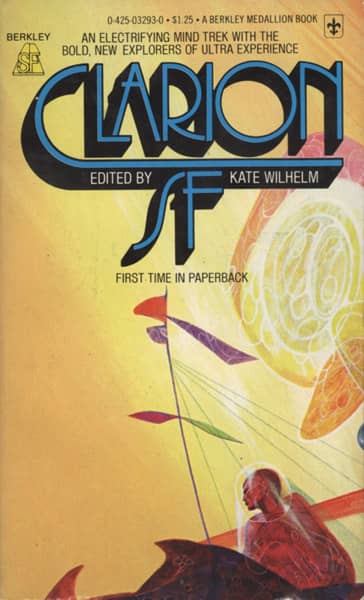
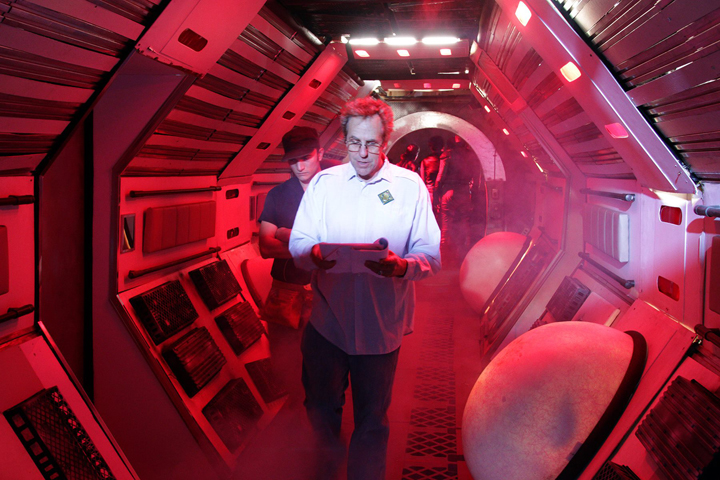
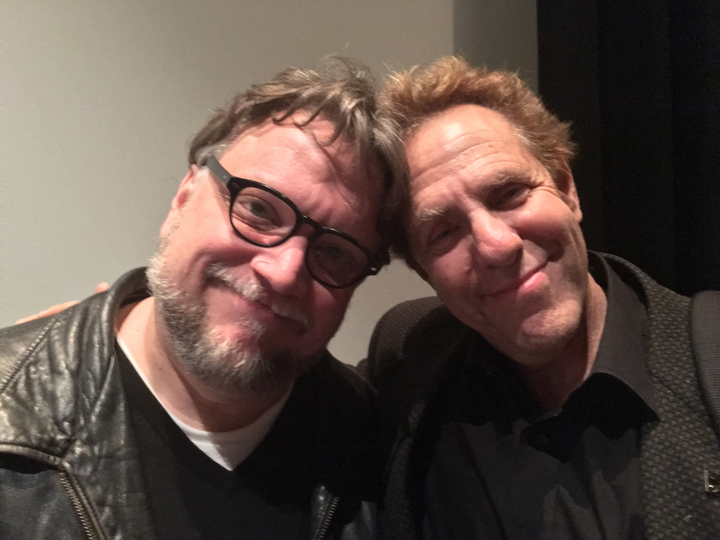
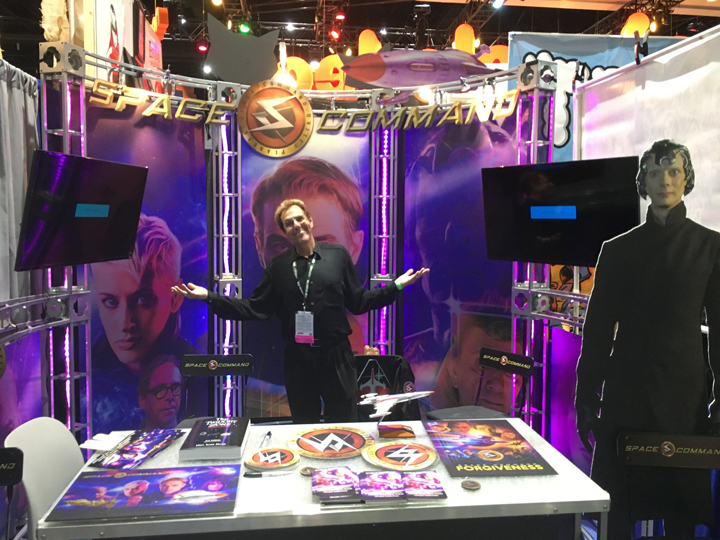
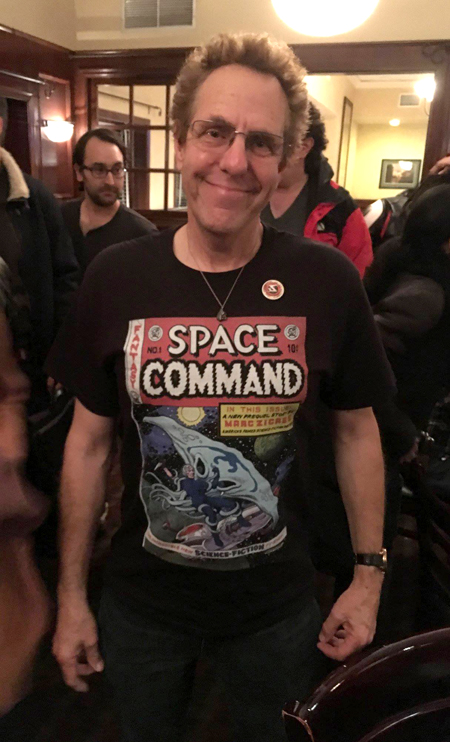
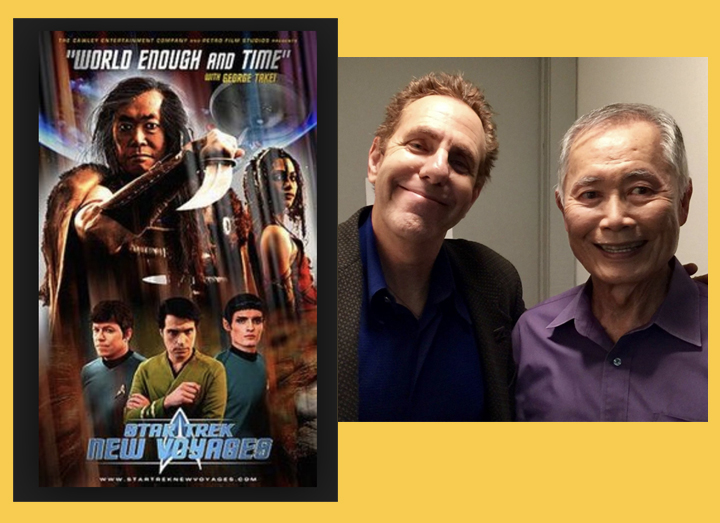
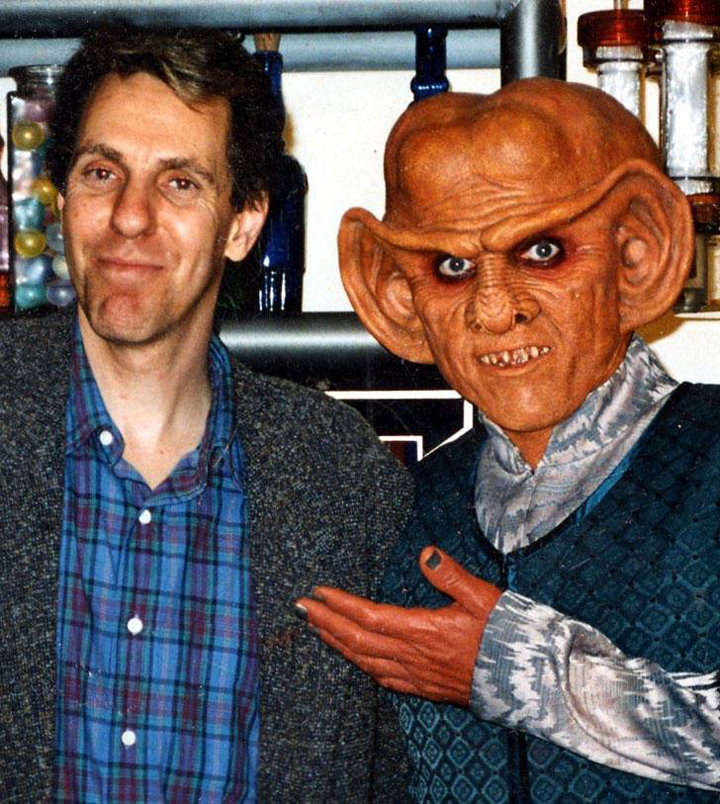
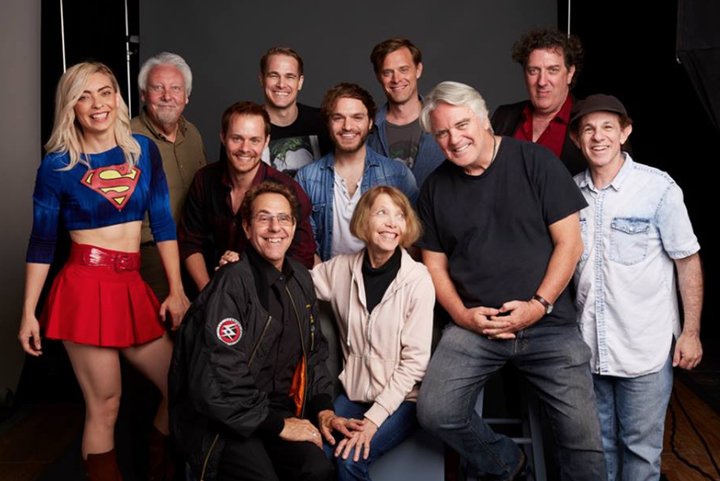
I watched this per the link.
I love it! I’m certainly for it being grabbed and put on TV. Kind of between Babylon 5 and Lexx in overall good, IMO. Def tribute to Star Trek but not derivative.